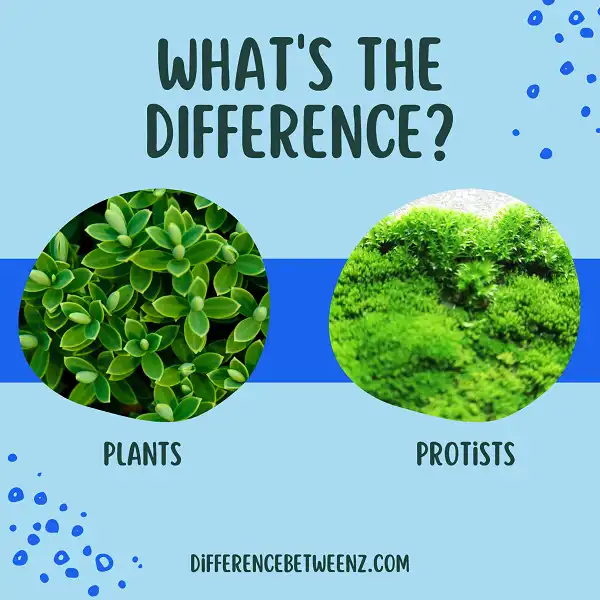When most people think of life, they think of plants and animals. However, there are other types of organisms that are living on our planet. Protists are one such type of organism, and while they share some similarities with plants, they have many unique features as well. In this post, we will take a closer look at the differences between plants and protists. Stay tuned for more!
What are Plants?
- Plants are classified as eukaryotic organisms because they have cells that contain a nucleus and other membrane-bound organelles. Plants are unique among eukaryotes in that they are the only group of organisms that can produce their own food through photosynthesis.
- Plants are able to do this because they contain chloroplasts, organelles that are unique to plant cells and that allow them to capture sunlight and convert it into chemical energy. Plants use this energy to create glucose from carbon dioxide and water, a process that releases oxygen as a by-product.
- This glucose is then used by plants for growth and development, or it can be stored in the form of starch. In addition to their ability to photosynthesize, plants also have cell walls made of cellulose, which gives them rigidity and support. All of these characteristics make plants distinct from other types of eukaryotic organisms.
What are Protists?
- Protists are classified as eukaryotic organisms. This means that they have a complex cell structure, with a nucleus and other organelles enclosed within membranes. Protists are very diverse and include such organisms as algae, amoebas, and slime molds.
- Most protists are single-celled, although some are multicellular. Protists can be found in nearly every environment on Earth, from the hot springs of Yellowstone National Park to the frozen tundra of Antarctica. Many protists are free-living, but some are parasitic, feeding off other organisms for their sustenance.
- Protists play an important role in the global ecosystem and provide food for many animals. They also help to recycle nutrients and play a role in the carbon cycle. Protists are an essential part of life on our planet.
Differences between Plants and Protists
Plants and Protists are both classified as eukaryotic organisms, meaning that they have complex cells with a nuclear membrane. However, there are several key differences between these two groups of organisms.
- Plants are autotrophs, meaning that they can produce their own food through photosynthesis. In contrast, protists are heterotrophs and must obtain their nutrients from other sources.
- Plants also have cell walls made of cellulose, which gives them rigidity and support. Protists do not have cell walls, although some may have a type of hard shell called a test.
- Plants are also stationary, meaning that they cannot move from one place to another. Many protists are able to move, either by swimming or by using hair-like structures called cilia. These movements allow protists to obtain food or to escape predators.
Finally, plants generally reproduce sexually, while protists can reproduce both sexually and asexually. As a result of these differences, plants and protists occupy very different niches in the world around us.
Conclusion
Protists are single-celled organisms that lack a nucleus and other organelles found in plants and animals. They can be unicellular or colonial, and some protists are capable of photosynthesis, while others consume organic matter. Plants are multi-cellular organisms with well-defined nucleus and other organelles found in animals. They are generally autotrophic, meaning they produce their own food through photosynthesis, but there are some parasitic plants that rely on another organism for sustenance.


